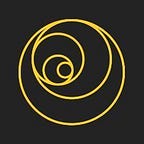Mario Livio on 25 Years of Hubble
The astrophysicist looks at the history of the world’s most famous telescope
By Gayil Nalls
At some point in our lives, we are confronted with something we fear is larger than ourselves, and with nowhere else to turn, we peer up to the heavens. There are also those among us who look there first and hold that gaze for a lifetime.
Astrophysicist Mario Livio is one such person. A senior theoretical astrophysicist at the Space Telescope Science Institute, Livio is an expert on supernovae and their imaging. His work has helped to determine the expansion rate of the universe and to understand dark matter and black holes.
I was there at NASA’s Kennedy Space Center in 1990 when Hubble became the first major optical telescope to be launched into space. Our so-called “eye in the sky” allowed us to look back in time and illuminate our origins. In spite of a rocky start that required a repair mission, Hubble soon detected evidence of massive black holes, followed by Pluto’s moons, and then the universe’s early galaxies.
